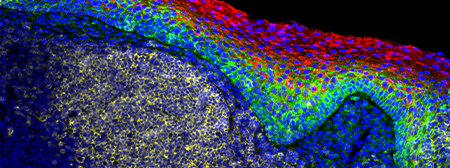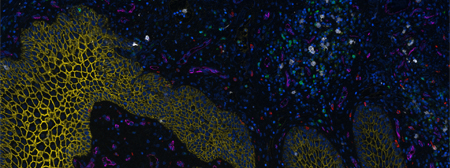Spatial biology is the study of analytes such as RNA, proteins, and DNA in their biological context and at sub-cellular resolution. These methods empower the identification of the location, function, and surrounding environment of cells in their native context. In addition, they paint a more complete picture of cell types, cell states, cell-cell interactions, and how all these contribute to development, health, and disease.
Various detection methods and instruments exist for the read-out of these analytes. We have long championed spatial biology in traditional applications like immunohistochemistry (IHC) and immunocytochemistry (ICC), building on our expertise in antibody production at scale and a strong catalog of clones.
As the technology expands, we are empowering a new generation of spatial biology applications using our antibody and conjugation capabilities. These include single-modality and highly multiplexed tissue imaging assays such as IBEX for detecting cell-surface proteins. We also support new multiomics methods, in which our fluor-conjugated antibodies serve as morphology markers in NanoString GeoMx® Digital Spatial Profiler RNA and Protein assays.
 Login / Register
Login / Register 










Follow Us